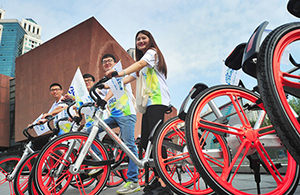Cold snap fuels calls for heating
By Hong Liang (China Daily) Updated: 2013-01-21 07:58The cold spell in the past couple of months has stirred heated debate in Shanghai and neighboring regions on district heating such as that found in northern cities.
For historical reasons, the majority of homes in central and eastern China, where the winter can get very cold, are denied what is considered the most cost-efficient heat source. Families that can afford it run their air conditioners non-stop to keep warm on particularly cold days, of which there have been many in the past month. Others seek relief with space heaters, electric blankets and hot water bottles.
There are those who simply wrap themselves in the traditional cotton-filled padded pajamas, which look bulky but are actually quite comfortable for watching television on the sofa. I have a petite woman friend who wears a heavy woolen sweater and two pair of tights under her padded pajamas to stay warm because she doesn't want to rack up her electricity bill.
Indeed, the high costs of electricity in Shanghai and some other cities in the region are adding to the misery of the "southern winter" that is not only cold but also damp. The dampness, healthcare experts say, makes people feel much colder even though the temperature, at least in Shanghai, seldom falls below zero during the day.
Most people in this region experienced the snowstorm of 2008 that disrupted the electricity and water supply to several cities and counties. At that time, I was lucky to be living in Shanghai where the supply of energy and other essentials was assured. Of course, we know that the chill this winter is nothing compared to those 15 days or so when the city was hit daily by blizzard after blizzard. But that's not the point. Times have changed. People are becoming more prosperous and their aspirations for a better quality of life have increased.
The municipal government must be credited for its efforts to satisfy such hopes, especially in the past several years. More subway lines have been completed, new parks built and older ones renovated, the sidewalks in most parts of the city are kept clean most of the time and the city authorities are seen to be taking food safety most seriously despite the occasional hiccups.

Colombian coffee has a story that I admire and use in my lectures and the reasons are the ones listed above. Congratulations!











